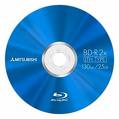Home entertainment: new formats, old habits
 The lucrative movie rental and retail business is under siege; with increased broadband access, piracy may soon be as ubiquitous as the PC in Australian homes. Of course, industry has a plan. Laine Lister writes.
The lucrative movie rental and retail business is under siege; with increased broadband access, piracy may soon be as ubiquitous as the PC in Australian homes. Of course, industry has a plan. Laine Lister writes.
To say that the home entertainment industry has hit a hurdle on the path to profits would be something of an understatement.
While consumers have spent big on HD screens and sound systems, they have become less extravagant in their game and movie purchases. In addition, file-sharing websites are more prolific than ever before.
It’s an unhappy combination that has dawned on industry that the situation isn’t going to improve without fundamental changes to the way it delivers movies. Having learned from the mistakes of the music world – which was long in denial of the volume of illegal downloads – movie distributors are on the front foot to counteract consumer lifestyle changes. Some are exploring digital copy – a portable version of a film that can be transferred to portable devices, others are using day-and-date video-on-demand and many are establishing in-house units to tailor digital release strategies for their titles.

